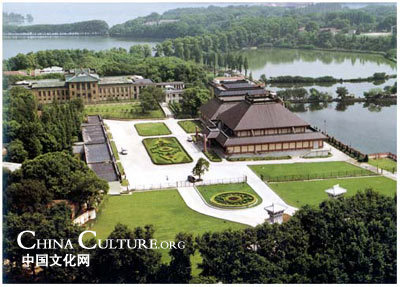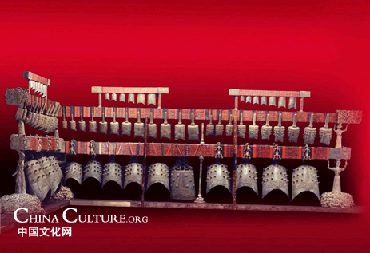| About Hubei | Culture & Arts | ||
| Attractions | Routes | ||
| Dining | Shopping | ||
| Hotels | Transportation | ||
| Entertainment | Travel agencies |
Jingshan to attract Wuhan tourists
Storytelling queen
For the love of Wuhan
Dangyang to promote tourism


Four Treasures in Hubei Museum
Updated: 2010-06-17

Founded in 1953, the Hubei Museum ranks among the best provincial level museums in China. It’s located in the Wuchang District of Wuhan, Hubei Province. Covering an area of more than 40,000 sq meters, the museum has three parts: the Chime Bells Exhibition Hall, the Chu (a state in the Spring and Autumn Period (770BC-476BC)) Culture Exhibition Hall, and the Comprehensive Exhibition Building.
The museum collects, protects, and exhibits cultural relics discovered in the province. Since 1953, the museum has collected over 200,000 cultural relics, including pottery, porcelain, jade, bronze vessels, ancient weapons, and ancient musical instruments. Among these cultural relics, over one thousand pieces are listed as first-class relics of China, and some are considered national treasures.
Among the collected relics, four pieces are considered the most priceless treasures in the museum. They are the chime bells, the Sword of Gou Jian (a king of Yue Kingdom), the blue-and-white glazed jar, and the skull fossil in Yun County.
The Chime Bells
 |
| The Chime Bells |
The most famous treasure is the Chime Bells, relics unearthed in 1978 from the tomb of Yi, the king of the Zeng Sate in the Warring States Period (476 - 221 BC). It’s the largest bronze musical instrument ever discovered. The complete set includes 65 bells hanging on a three-tiered rack weighing over 2,000 kilograms. With a set of bells of different sizes, it can play various tones onf the musical scale, and the timbre is quite beautiful. There are about 3,000 ancient Chinese characters on the bells, describing the music and the owner of this instrument. After over 1,000 years, the bells still sound perfect, ready to play melodies local and foreign, classic and modern.